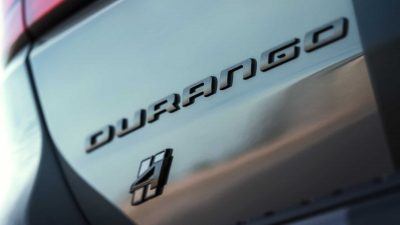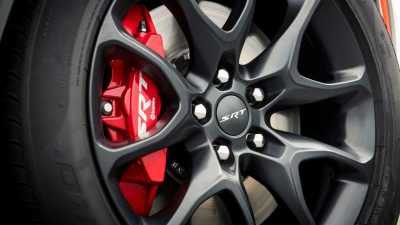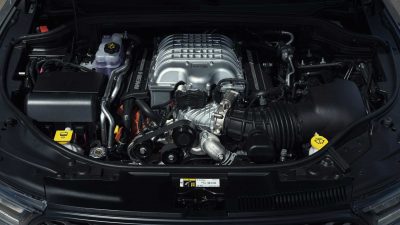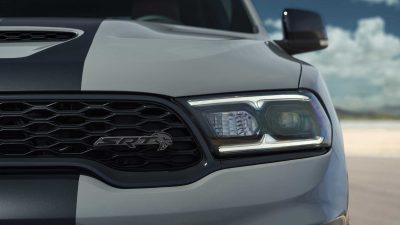Ever wonder what would happen if the Dodge Durango received the 6.2 liter supercharged Hellcat V8? Enthusiasts have always wondered that as well, and for a long time, the Durango stood out as the black sheep offering, with the rest of FCAs big car and SUV lineup all getting Hellcat powered variants. But at last, the wait is finally over for the Durango Hellcat and what a beast it is.
The exterior styling of the Durango surprisingly plays it safe, with Dodge designers opting for a mild refresh instead of an all out rethink. The bulk of this tweaking is focused on the front fascia which finally retires the crosshair front grille in favor of an all new grille design that is supposed to be very similar to the one seen on the current generation Dodge Challenger. Like other Hellcat models, the Durango Hellcat loses its fog lights, with the units themselves being replaced by inlets that help channel and funnel air into the engine bay. A hood scoop further adds to the look, while the functional hood vents pump even more air into the engine. The Durango Hellcat has 20×10 inch wheels as standard equipment, but an optional Black package can see those swapped out for a set of darkened hoops that retain the prior size measurements. A bold front splitter helps reduce lift at high speeds, while the lightly tweaked rear end features a roof mounted spoiler that helps provide up to 400 pounds of downforce when the Durango is moving at 180 mph. Other than the spoiler, the rest of the rear fascia is largely unchanged, with the Durango retaining its iconic racetrack style LED taillights.
The interior on the other hand is where the Durango Hellcat will share the bulk of its DNA with its other siblings. All 2021 Durangos received a revised cabin, with Dodge designers opting for higher quality materials as well as other functional tweaks including a larger center console, redesigned center stack, as well as a traditional shift lever for the eight speed automatic. A 10.1 inch infotainment system is not only the largest in its class, but also the most diverse, with the screen being available on almost every Durango trim. The lone exception is the SXT trim which gets an 8.4 inch screen that helps the SXT stand out against rivals like the Chevrolet Traverse and the Ford Explorer. The bigger screen is powered by the all new Uconnect 5 interface. This setup offers sharper graphics and greatly reduces loading times.
The Durango Hellcat also gets the Performance Pages App which allows owners to customize various aspects of the driving experience, including the engine, transmission, steering, and the suspension tuning. Both the SRT 392 and the SRT Hellcat get a flat bottomed wheel with integrated shift paddles, and an illuminated SRT logo in the center spoke. The tiller also appears to be slightly tweaked versus what we’ve seen in the outgoing model. Red trimmed gauges are paired with standard Nappa Leather seats that are infused with suede inserts, and an embroidered SRT logo. Buyers looking for more comfort can go for the optional Laguna leather seats which feature an embossed logo on the seat backs.
But comfort and lightly revised styling are not the headline grabbers here. Instead it’s what lurks under the hood, and as the name implies, the Durango Hellcat is packing the familiar 6.2 liter supercharged Hellcat Hemi V8. In this particular application, it makes 710 horsepower and 645 lb-ft of torque. That’s enough to rocket the Durango Hellcat to 60 mph in 3.5 seconds and a final top speed of 180 mph. This is utterly bonkers for the segment, and leaves the Durango Hellcat with no true rival that can match it. The engine even manages to make more power than some pricier cars including the BMW X5 M, Mercedes GLE63 S, as well as the Porsche Cayenne Turbo which allows the Durango to hang out in some world class company. The Durango Hellcat also benefits from a number of upgrades that not only strengthen the chassis, but also enhances the sound, with the free flowing exhaust benefiting from a crossover X-pipe (the largest in the Hellcat family.)
But of course, this is just more than Dodge engineers sticking a giant V8 under the hood, with the Durango Hellcat also offering a whole host of upgrades designed to keep the unbridled chaos under control. The eight speed automatic is lifted from the Jeep Grand Cherokee Trackhawk, while standard all-wheel drive helps ensure equal power delivery to all four wheels. Each one is outfitted with Pirelli Scorpion Zero all season tires as standard. However, buyers looking for more track focused grip can swap them out for Pirelli P-Zero summer tires. The suspension also benefits from new tuning that focuses on providing more comfort and handling prowess. This is achieved with a 20 percent increase in total rebound control , as well as other tweaks that further sharpen its track manners. The SRT 392 is also slated to get similar suspension refinements, but look for the Hellcat to still be the top choice in a dogfight. Braking duties are handled by Brembo branded brakes with 15.8 inch slotted two-piece front rotors and 13,8 inch slotted rear rotors paired with six piston front and two piston rear calipers providing plenty of stopping power. This helps the Durango Hellcat achieve a stopping distance of 116 feet which is better than some world class sports cars.
Pricing for the Durango Hellcat has not been released as of yet, but look for pricing to perhaps start somewhere around $83,000. That prediction is based on what is already known about the current generation Jeep Grand Cherokee SRT and Trackhawk which reside in roughly the same pricing bracket. The first 2021 Durangos are expected to make their way to dealerships earlier this year, but the Durango Hellcat will only be around for one model year, so interested buyers will have to act quickly to secure there spot on the ordering list.
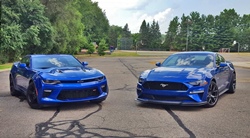
Carl Malek has been an automotive journalist for over 10 years. First starting out as a freelance photographer before making the transition to writing during college, his work has appeared on numerous automotive forums as well as websites such as Autoshopper.com.
Carl is also a big fan of British vehicles with the bulk of his devotion going to the Morgan Motor Company as well as offerings from Lotus, MG, and Caterham. When he is not writing about automobiles, Carl enjoys spending time with his family and friends in the Metro Detroit area, as well as spending time with his adorable pets.












